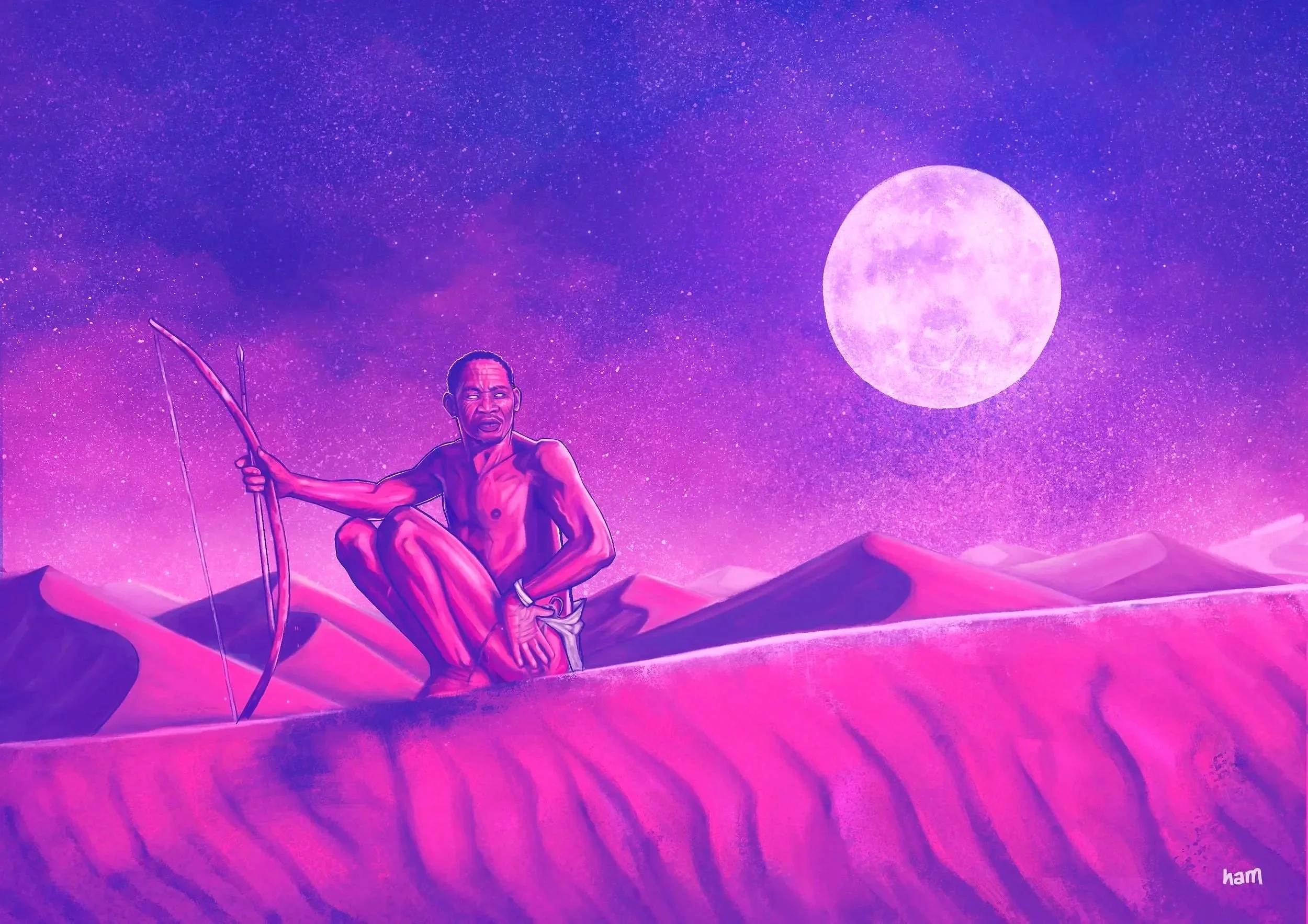
new narratives
British Council x Caebladdon
PROJECT GOAL
Commissioned by the British Council and Caerbladon for the New Narratives programme, Ancestral Futures is a four-part painting series exploring identity, erasure and survival. It follows one boy growing into a man as the world around him fades. Created within a five-year initiative linking artists across the UK and Sub-Saharan Africa, the project aimed to spark new, authentic dialogue between regions. My response to the theme of connection looked beyond heritage – toward what’s lost. As his story unfolds, the water recedes, a warning of culture and balance stripped away in the name of progress.
Painting Timelapse
DUNE
A woman and her infant son rest by a full body of water. The scene is calm and unguarded — a quiet moment rooted in land, lineage and abundance. The mother is more than a caregiver; she embodies presence and protection, a symbol of life before scarcity. Her surroundings recall a time when memory was shared through closeness, not distance. Here, water remains a symbol of abundance — full, alive, and holding a world still whole.
MOTHERLAND
Three adolescent boys walk across a drying landscape. The water that once centred their world is now a fading memory. This moment – loosely drawn from Southern African Xhosa rites of passage – marks a shift in both age and environment. The composition stays bare and honest. There’s no drama, just movement with quiet conviction – not toward adulthood, but into a new reality where what once grounded them no longer holds. The land around them, once lush, now hums with tension and loss.
PASSAGE
The same trio, now men, stand around a hornless rhino – its wound lit by the surreal glow of artificial horns. The natural is gone, replaced but never healed. There’s no triumph here, only vigilance. The guardians don’t look powerful; they look required. This piece carries two urgencies — one about ecological loss and the violence of poaching, the other about the weight of defending a world that’s stopped defending its people.
GUARDIAN
DUNE
An elder sits alone atop a sand dune in the Namib Desert. The water is gone; the land is silent, unbothered, yet still holds dignity. This final piece isn’t an ending but a distillation. The child once surrounded by water has merged with the dry earth. There’s no mourning here — only stillness and the quiet grace of survival. DUNE asks what remains when everything else is stripped away — and whether that trace is enough to start again.
The New Narratives project is about opening up a future facing dialogue between young creatives and representative organisations in Africa and the UK to build stronger cultural connections between those living in the four UK nations and on the African continent. The project is looking for fresh perspectives, new insights based on lived experience and which challenge dominant narratives about Africa and the UK, including those relating to the UK’s colonial past and oversimplistic and negative representations of Africa and its diverse peoples and cultures.
You can read more about it by clicking the article below:
